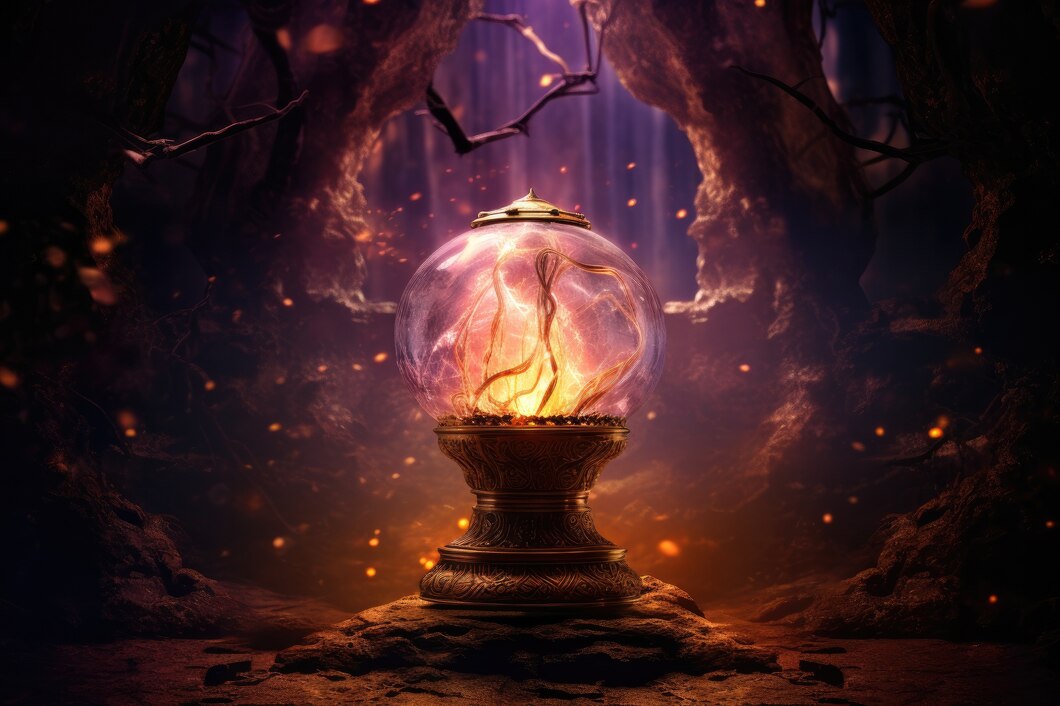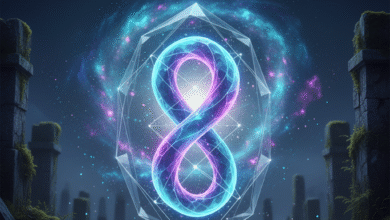the Mysteries of the Crystal Ball: History, Uses, and Meaning

The crystal ball has captured human imagination for centuries. Whether you’ve seen it in movies, read about it in books, or stumbled upon one in a mystical shop, the crystal ball evokes curiosity and wonder. But what’s the story behind it? Is it just a decorative piece, or does it hold deeper meanings?
In this blog post, we’ll explore the fascinating history of the crystal ball, its uses in different traditions, and how it continues to be a symbol of mystery and foresight. Whether you’re a skeptic or a believer, there’s no denying the allure of this iconic object.
What Is a Crystal Ball?
At its core, a crystal ball is a perfectly spherical object, usually made from quartz or glass. It’s designed to be smooth and clear, allowing light to pass through without distortion.
While it’s most famously associated with fortune-telling, the crystal ball also holds decorative and spiritual significance. People often place it in their homes to amplify positive energy, improve focus, or simply as a conversation starter.
A Brief History of the Crystal Ball
The use of crystal balls dates back thousands of years. Here’s a quick timeline:
- Ancient Druids: The earliest known use of crystal balls can be traced to the Celtic Druids in Britain around 2000 BCE. They believed the spheres held divine energy and used them for divination.
- Medieval Europe: During the Middle Ages, crystal balls became tools for seers and mystics. They were thought to help users access hidden knowledge or predict the future.
- Renaissance Period: Interest in the crystal ball soared as alchemy and mysticism gained popularity. It became a symbol of wisdom and the pursuit of enlightenment.
- Modern Era: Today, crystal balls are seen in pop culture, from magic shows to psychic readings, but they’re also used in meditation, feng shui, and holistic healing.
How Does a Crystal Ball Work?
Let’s clear up a misconception: a crystal ball doesn’t work like a movie projector. There are no flashing images or clear visions magically appearing inside it. Instead, it serves as a focus tool for the mind.
Practitioners, such as psychics or scryers, use the crystal ball in a process called “scrying.” Here’s how it typically works:
- Preparation: The person sits in a quiet, dimly lit space to eliminate distractions.
- Concentration: They gaze into the crystal ball, allowing their mind to enter a meditative state.
- Impressions: Instead of literal pictures, they interpret intuitive flashes, symbols, or feelings that arise.
This process relies heavily on intuition and personal interpretation, which is why results vary from person to person.
Common Uses of Crystal Balls Today
The crystal ball has evolved beyond fortune-telling. Here are some modern applications:
1. Spiritual Growth
Many people use crystal balls in meditation to focus their thoughts and achieve clarity. The smooth surface acts as a calming focal point, promoting mindfulness.
2. Feng Shui
In feng shui, placing a crystal ball in your home can deflect negative energy and enhance harmony. It’s often positioned near windows to reflect sunlight, spreading positive energy.
3. Interior Decoration
Let’s not overlook the aesthetic appeal! A crystal ball adds an element of elegance and mystique to any space.
4. Holistic Healing
Some healers incorporate crystal balls into their practices to channel energy or balance chakras. Quartz, in particular, is believed to amplify intentions and promote healing.
How to Choose the Right Crystal Ball
Shopping for a crystal ball can feel overwhelming with so many options available. Here’s a quick guide to help:
- Material: Quartz crystal is popular for its clarity and energy properties. Glass versions are more affordable and just as beautiful.
- Size: A larger ball makes a dramatic statement, while smaller ones are perfect for personal use or meditation.
- Purpose: Are you buying it for decoration, energy work, or meditation? Knowing your intent can guide your choice.
Crystal Ball Care Tips
To keep your crystal ball in great condition, follow these tips:
- Clean Regularly: Use a soft cloth to remove dust. For quartz, you can also cleanse its energy by placing it in sunlight or moonlight.
- Handle with Care: These spheres are delicate! Keep them on a stable surface and avoid dropping them.
- Avoid Direct Sunlight: If your crystal ball is exposed to intense sunlight, it could magnify the rays and pose a fire hazard.
The Symbolism of the Crystal Ball
Beyond its physical properties, the crystal ball is rich in symbolism. It represents clarity, intuition, and infinite possibilities. The circular shape, without beginning or end, is often seen as a metaphor for the cycle of life and the interconnectedness of all things.
Conclusion
The crystal ball is much more than a mystical object—it’s a symbol of curiosity, introspection, and spiritual connection. Whether you’re using it as a meditative tool, a decorative piece, or simply enjoying its rich history, the crystal ball continues to enchant and inspire.
FAQs About Crystal Balls
1. Can anyone use a crystal ball for scrying?
Yes! While it may take practice, scrying with a crystal ball is something anyone can try with an open mind and patience.
2. What’s the difference between a glass ball and a quartz crystal ball?
A glass ball is purely decorative, while quartz balls are believed to have metaphysical properties that enhance energy work.
3. Do crystal balls predict the future?
Not exactly. Crystal balls are tools to aid intuition and reflection, helping users interpret potential outcomes rather than delivering concrete predictions.
4. Where should I place my crystal ball at home?
For feng shui, place it near windows to reflect light and promote positive energy. For meditation, keep it in a quiet, serene space.
5. How much do crystal balls cost?
Prices vary widely. Glass balls can cost as little as $20, while high-quality quartz spheres can range from $50 to several hundred dollars.



